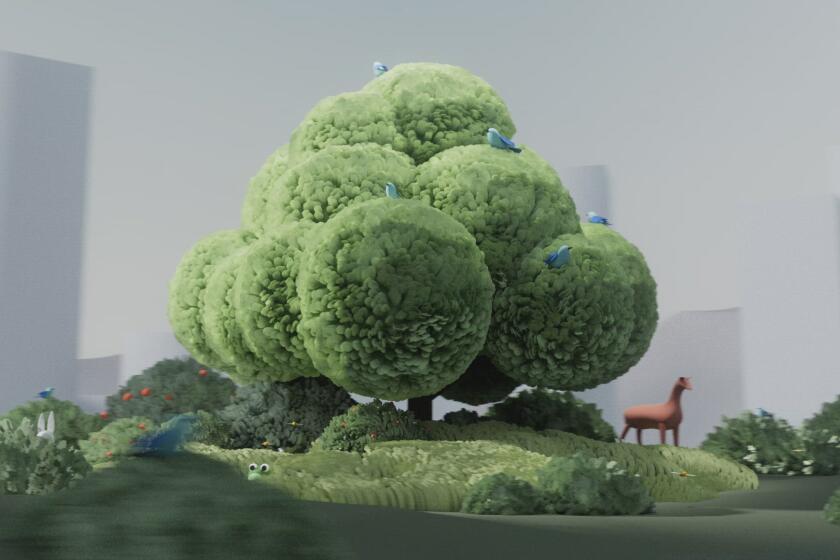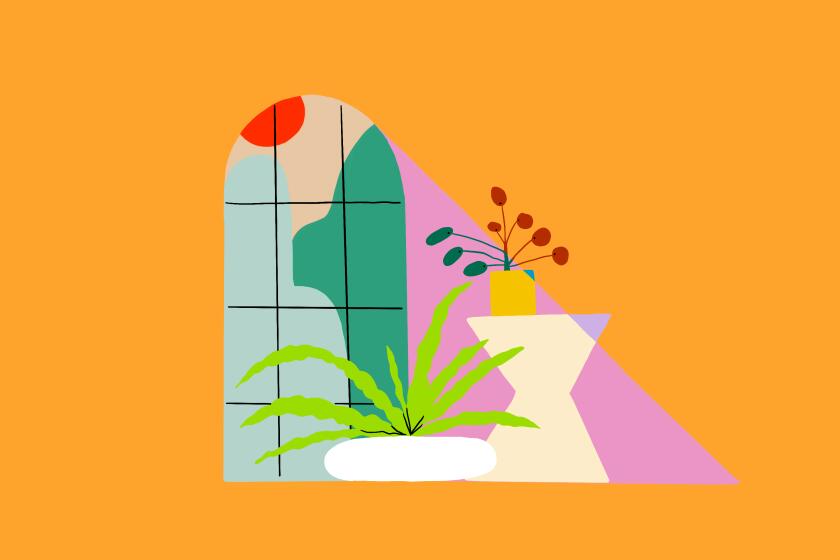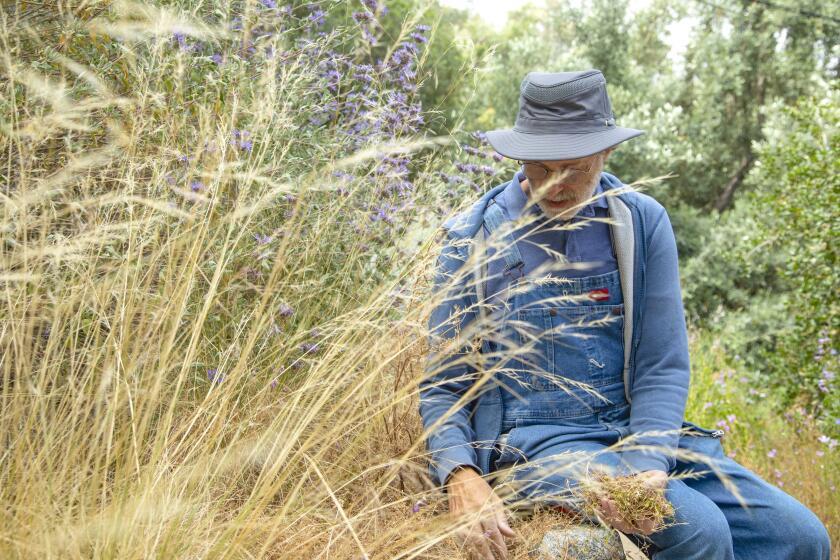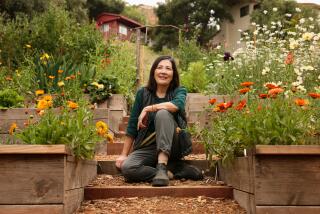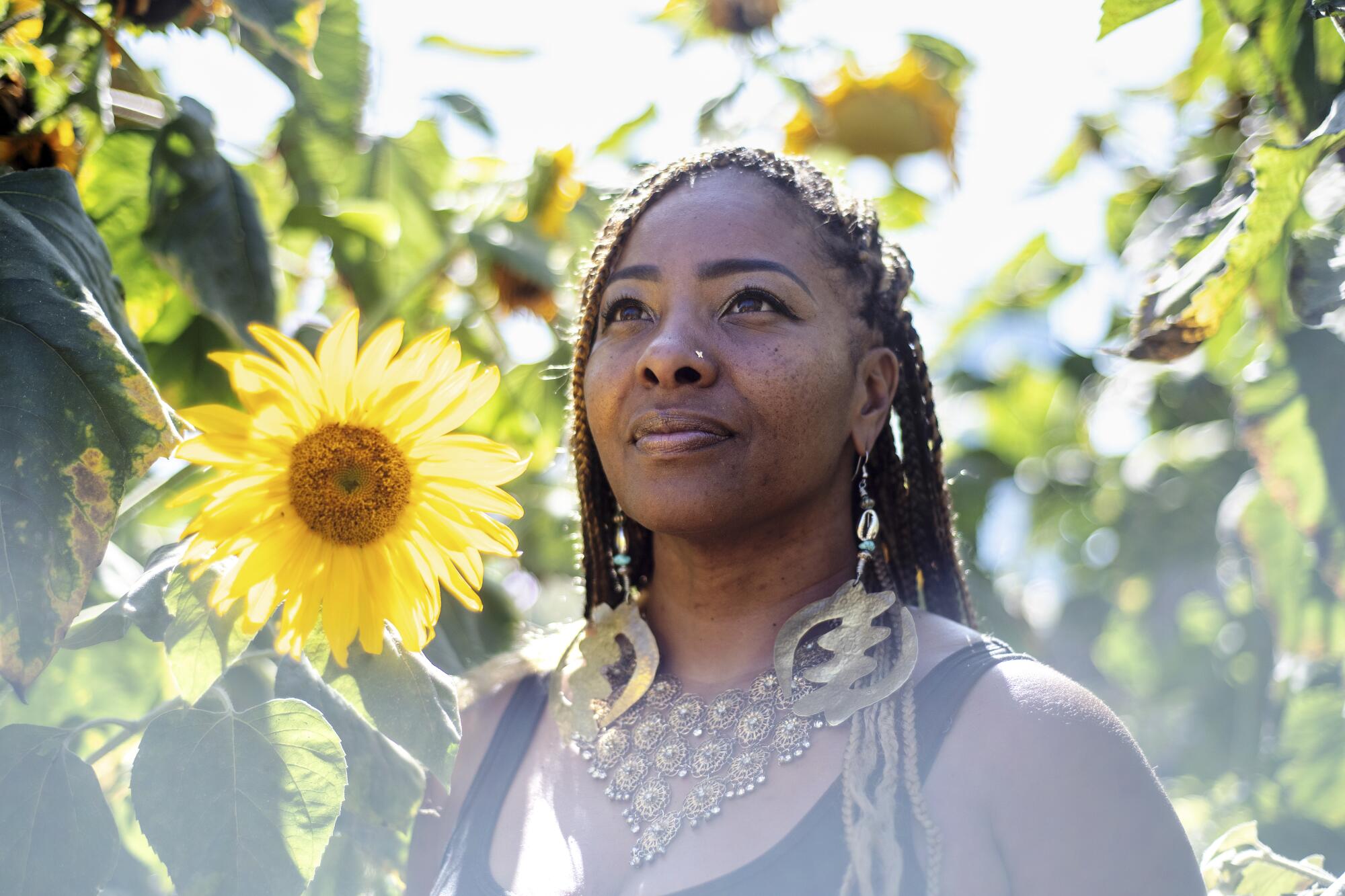
- Share via
In our Plant PPL series, we interview people of color in the plant world. If you have suggestions for PPL to include, tag us on Instagram @latimesplants.
At 25, Genea Richardson lived in a 400-square-foot concrete cell, along with seven other women, four bunk beds, four lockers, a toilet and a shower. She felt like she was suffocating.
But outside, in a small garden at the Central California Women’s Facility in Chowchilla, amid the grass, weeds, soil and trees, she could breathe easy. She felt grounded when she volunteered to water the plants.
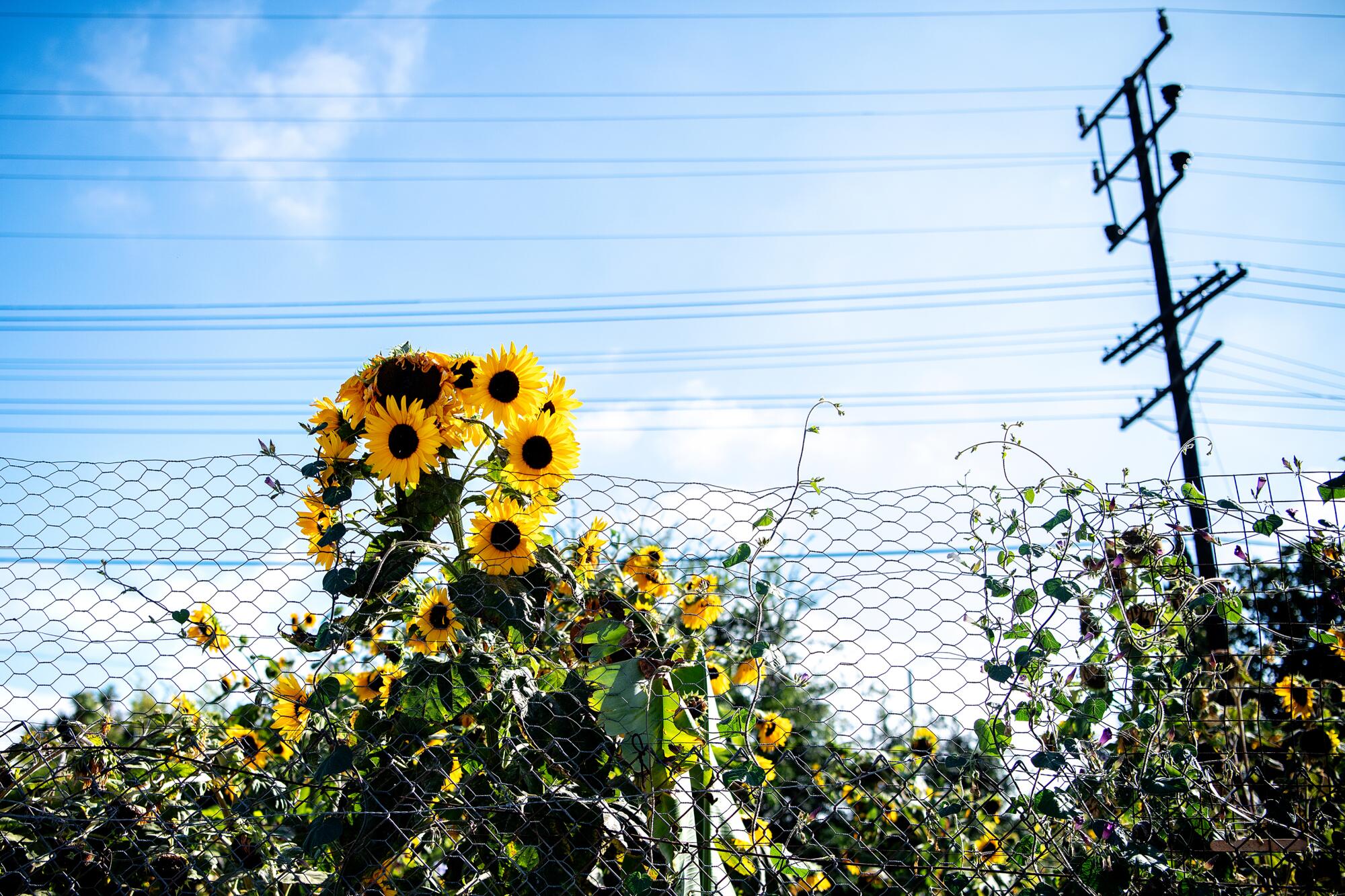
“In those moments,” Richardson says, “I had peace.” Her primary job at the prison was cleaning and sanitizing the grounds, but she eventually became known for her plant prowess. “People in the prison would bring plants to me,” she says, “because they knew that I liked them and that I could bring them back to life.”
She was released from prison in June 2020. She had been arrested in 2002 and later sentenced to 26 years to life for being an accomplice to first-degree murder during a robbery. Richardson was with another woman who shot a man at a motel but maintains she didn’t intend to aid in the crime. She was released early due to a 2018 law that lessens penalties for accomplices in cases like hers.
At 40, she now lives in a studio apartment not much bigger than her prison cell, but it is full of life. Plants line the windowsills, sit on the nightstands, crowd the kitchen counters and cover the floors. Caring for plants at home keeps her mindful to care for herself and her mother, Iris, who lives across the hall. Iris has grown fond of all the green that her daughter has brought into their world. Richardson often sees Iris secretly talking to the plants when she helps tend to them.
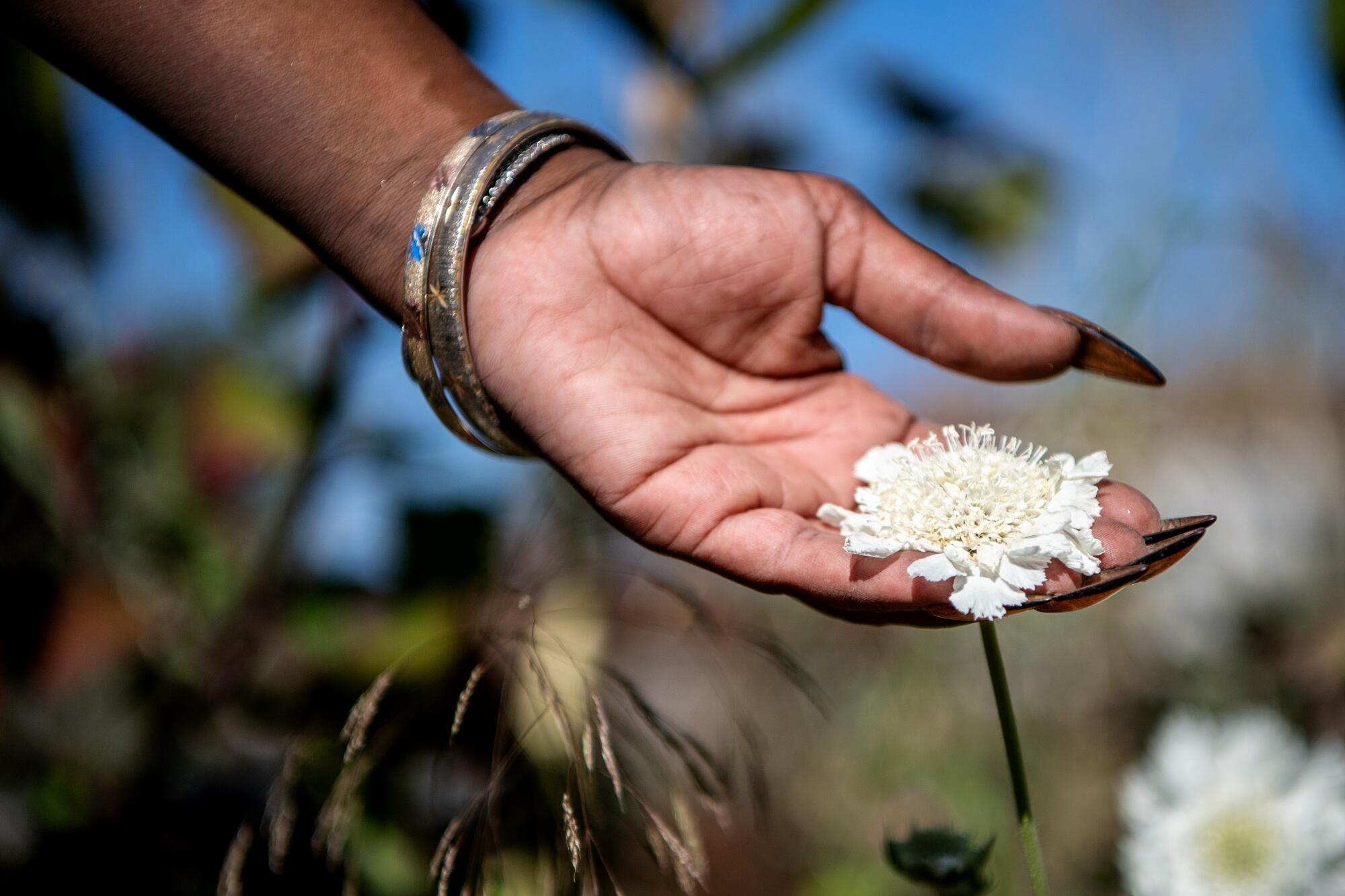
Richardson also surrounds herself with plants at work as a director at Huma House, a reentry nonprofit in Los Angeles. She trains formerly incarcerated people to plant and prune and finds them jobs through the organization’s gardening arm, Angel City Urban Farms. She procures gardening and landscaping clients for her small team. She also leads what she calls “soil therapy” programs, guiding people who are managing trauma through simple planting activities.
“Our DNA has been transformed through trauma. So what we’re doing is we’re reversing that trauma by creating new and healthy experiences,” she says, referring to how consuming traumatic experiences can be.
Los Angeles needs micro forests to help fight climate change and animal extinctions, says horticulturist Katherine Pakradouni.
The gardening work is sacred to her. She cares for every herb and weed in the gardens she tends but she has a special place in her heart for the vibrant fuchsia blooms of bougainvilleas — vining shrubs with hidden sharp thorns. She feels the heartbeat of the earth as the soil clings to her fingers.
“Gardening,” Richardson says, helps people “on so many different levels. It helps you to think better and helps you to breathe better.”
When she was a kid, her godmother would take her to a cousin’s house and she would rush to the garden, where she felt “wrapped in a fairy-tale forest.” In the backyard of her own childhood home, where tías and uncles and cousins all lived together, there wasn’t much greenery. But she loved to climb an overgrown lemon tree. Then when she was 10, her family moved and she started to get into trouble, transitioning in and out of juvenile detention facilities until eventually she ended up at Chowchilla.
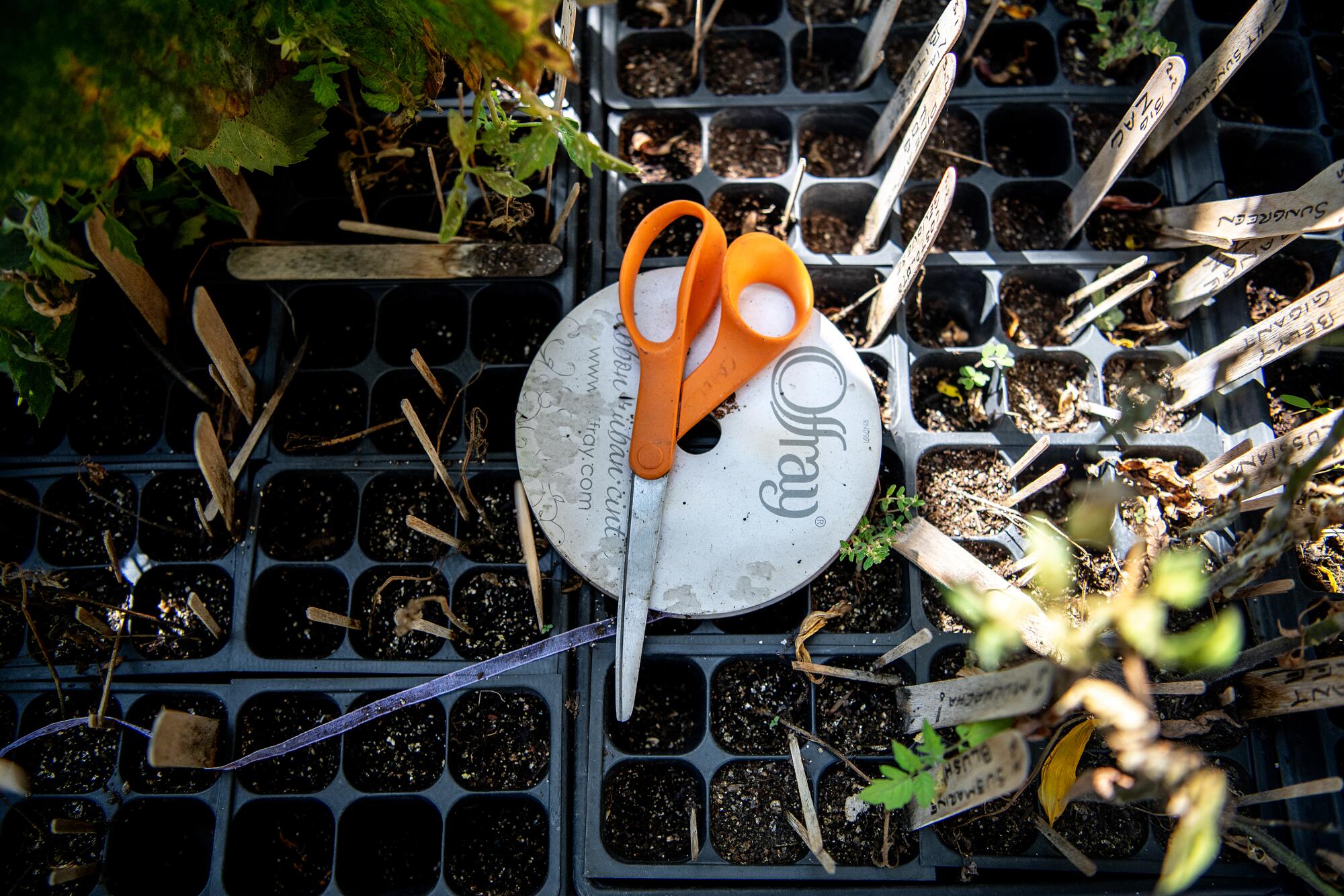
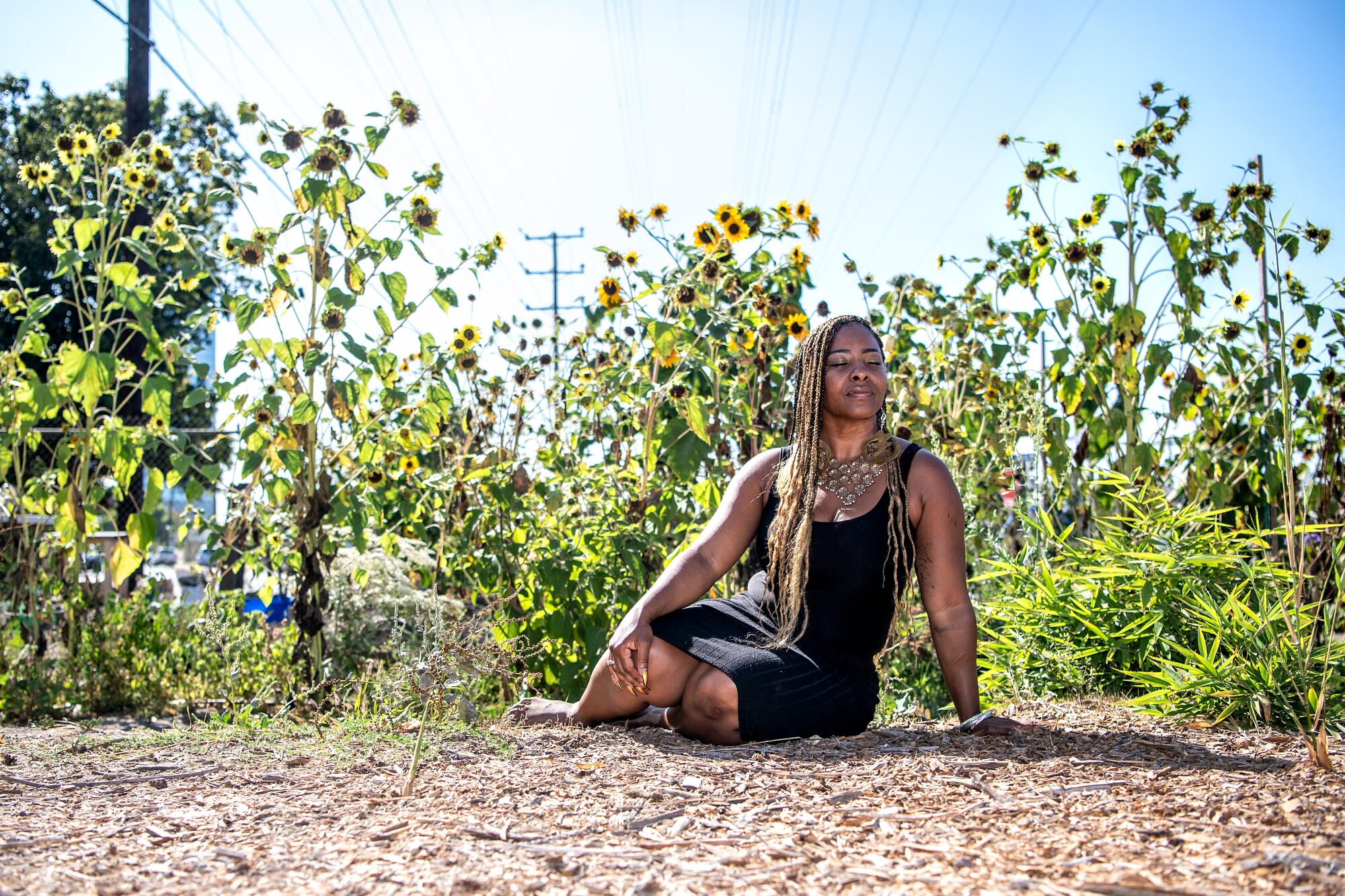
She was incarcerated when her father had a seizure. After years in and out of hospitals and nursing homes, he died. Their relationship was complicated, partly due to his alcoholism and abuse of her mother, she says; although “there was bad mingled in with the good ... for the most part, the good prevails.”
When she puts her hands in the ground, she releases her trauma. While she and her mother lost contact for many years, they are now inseparable and have two dogs, Eli and Ricky. Richardson greets every passerby as they walk the dogs on the street. “Me and my mom, we had to reintroduce ourselves to each other,” Richardson says. “And we’re finally understanding the roles we’re supposed to play in each other’s lives.” Iris accompanies Richardson on many work projects, and the duo are often either bickering or laughing at an inside joke.
Cactus, succulents, herbs, dwarf citrus and other houseplants that can handle the summer heat.
Richardson got involved with Huma House just a few months after her release. She met Tobias Tubbs, a co-founder of the nonprofit, through a mutual acquaintance. Tubbs spent 30 years in prison, where he ultimately became a peer educator and trainer for rescue dogs. He founded Huma House with Meetra Johansen, who calls Richardson a “goddess of the garden.”
In the beginning, Richardson worked at a property in Beverly Hills through Huma House with her co-worker and mentor Brendan Wilson. He taught her new skills, including how to understand the language of the tree, the bush and the sapling.
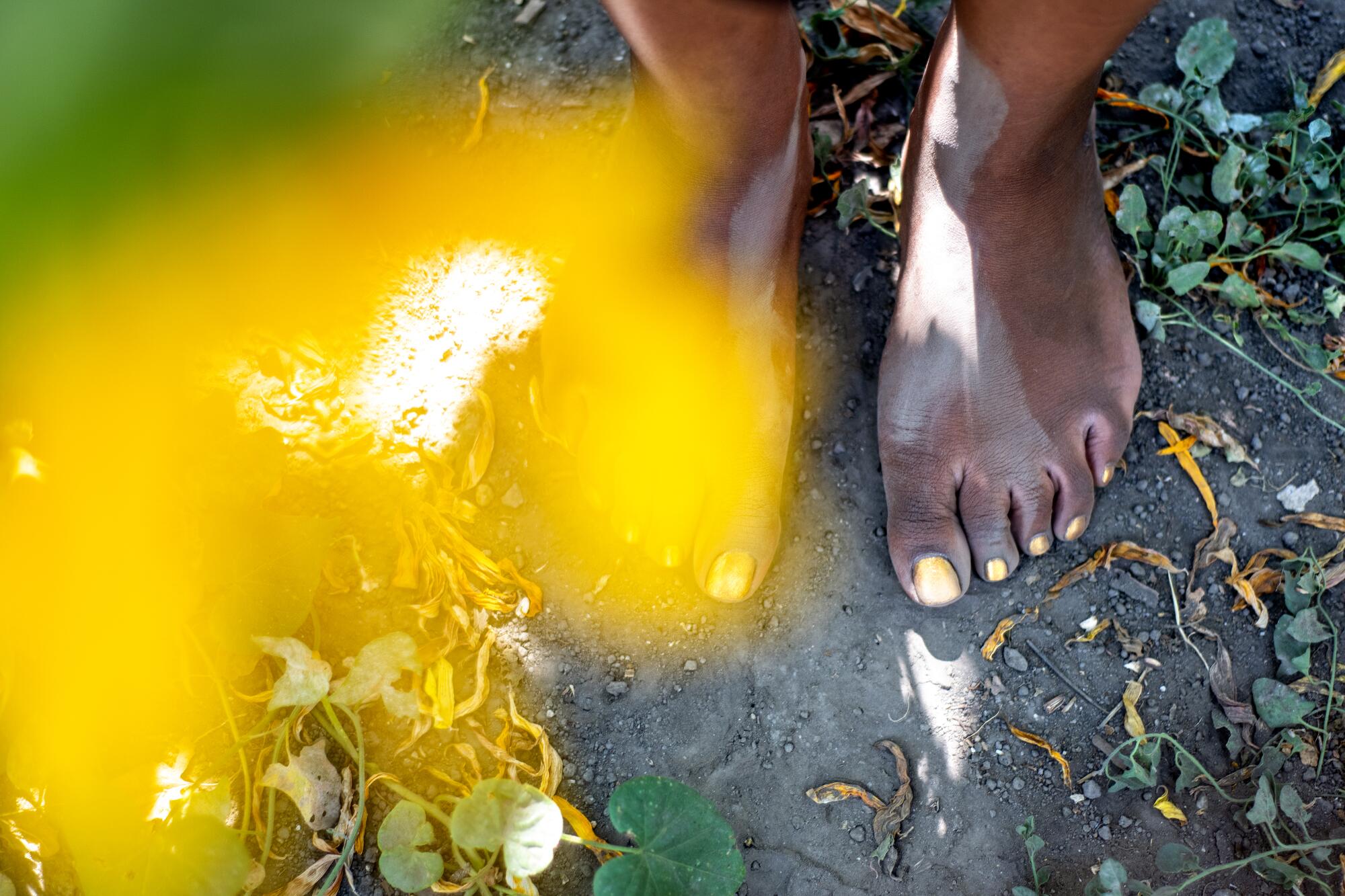
“I butchered an azalea he told me to prune. He was trying to tell me it’s OK,” Richardson chuckles as she thinks back, “but I saw the veins in his neck were strained.”
Richardson is constantly building up her plant knowledge. She often uses Google Lens to identify new species she encounters. Her searches always include a ritual: finding the spiritual meaning behind the plant.
“I found out that azaleas represent family and it aligned with everything that I was doing and feeling,” she explains. “Whatever I was carrying in my heart, my pain, my hurt, I just began to cut that stuff off with the bush. It just began to speak to me — the garden literally began to speak to me.”
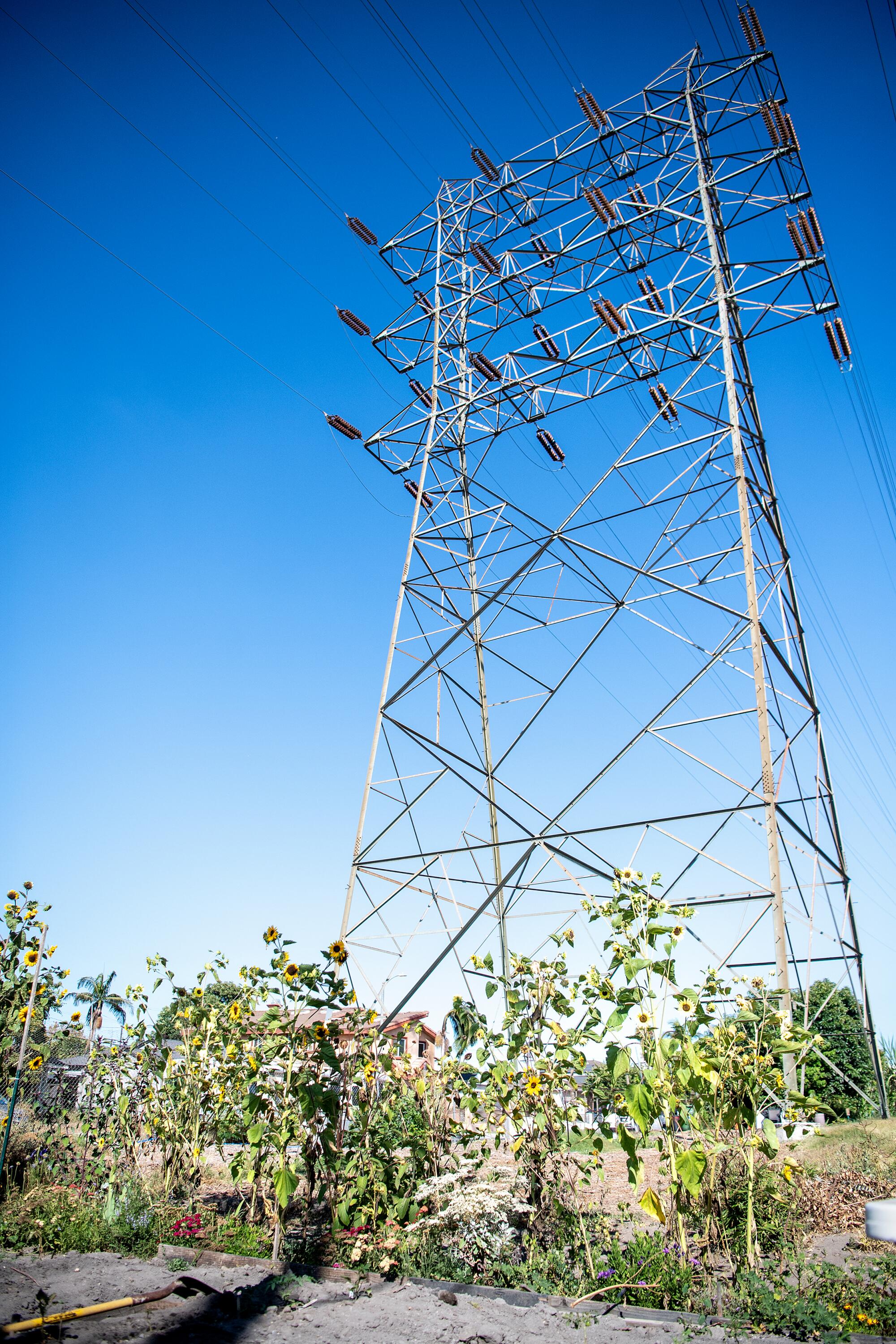
In early 2021, Richardson hired Ilka Rosales to work with Huma House on landscaping jobs. Rosales had taken a landscaping class while in prison and wanted to work with plants when she returned home in 2019 after serving 25 years.
“Just working outside, it’s a breath of fresh air because I feel closer to God,” says Rosales, who has since moved on to other work. “It was just one big blob of trees and bushes but then after you go through it, it becomes like a song, it becomes like a piece of art.”
When they worked together, Rosales and Richardson would assess progress on their ongoing projects. For Richardson, these talks were a chance to pass along what she had learned. For Rosales, spending time with Richardson was restorative.
“It’s easier to relate to somebody who’s been formerly incarcerated and still carries the same sisterhood,” Rosales says. “Like, I never knew Genea but just meeting her, knowing her background was similar to mine, it’s like we knew what each other needed.”
Native plant gardens can look dead over the summer, but there are things you can do to tend to the dried-out vegetation.
Since January, Richardson has been leading a program for children in the foster-care system, some of whom are often in and out of juvenile detention, she says. Working with a grant through the McCarty Memorial Christian Church, Huma House provides a safe space for kids, especially those exposed to gang activity, to find community.
Twice a month, five to 10 kids visit a community garden. The morning of, Richardson joins her mother in prayer. As the kids arrive, she gathers them in a circle to discuss how they’re feeling and explains the activity for the day, which might be planting flower seeds or tomatoes. Then the work begins. The kids follow her lead as she demonstrates the planting process with a sapling. She brings snacks, making an effort to remember the children’s preferences. She encourages them to call her if they ever need anything or just want to talk.
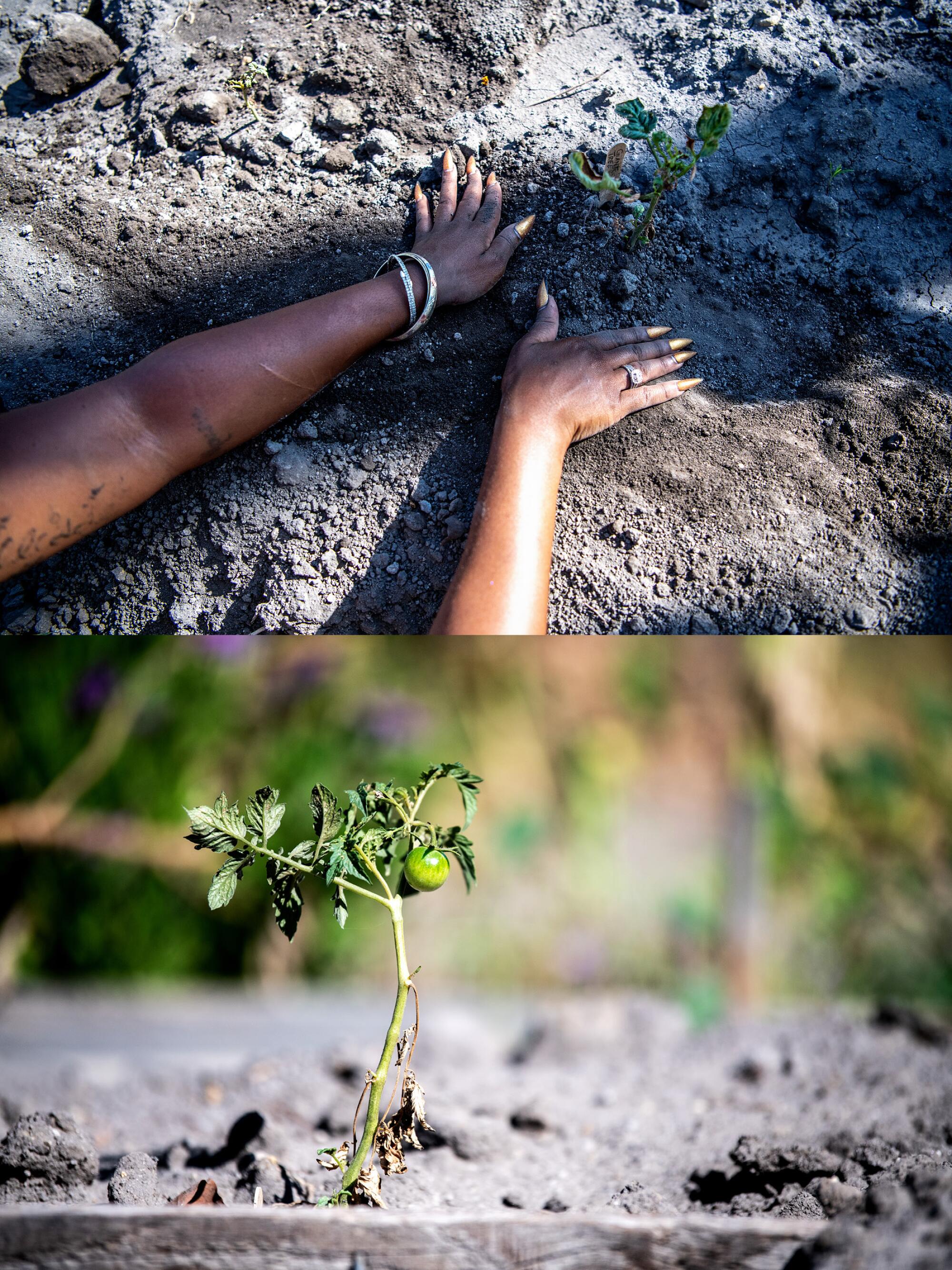
When they came to the garden for the first time, the area was bare and dry. Each month, the kids see it transform. “They were so happy with those sunflowers,” Richardson says. “When they saw that from their own hands they grew that, they went crazy.”
She believes that the garden brings people together and changes perceptions in unexpected ways. Many encounter formerly incarcerated people in the garden with prejudices and leave with new friendships. Bringing people together through the garden is her new life’s work.
“The soil doesn’t discriminate,” Richardson says. “It doesn’t care about color, race, class or gender. It’s all about paying attention, doing the work and making things grow.”
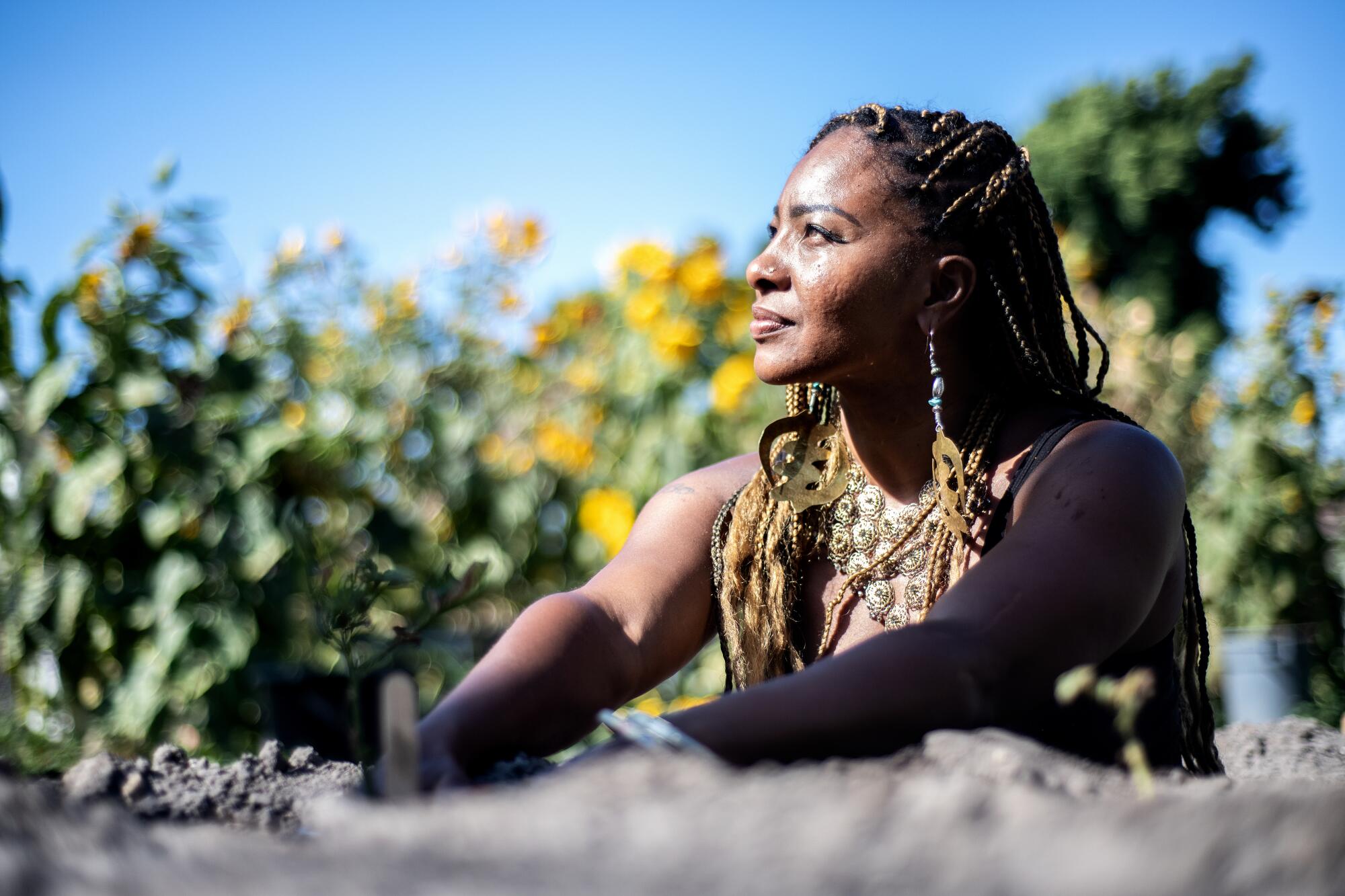
More to Read
Sign up for The Wild
We’ll help you find the best places to hike, bike and run, as well as the perfect silent spots for meditation and yoga.
You may occasionally receive promotional content from the Los Angeles Times.
